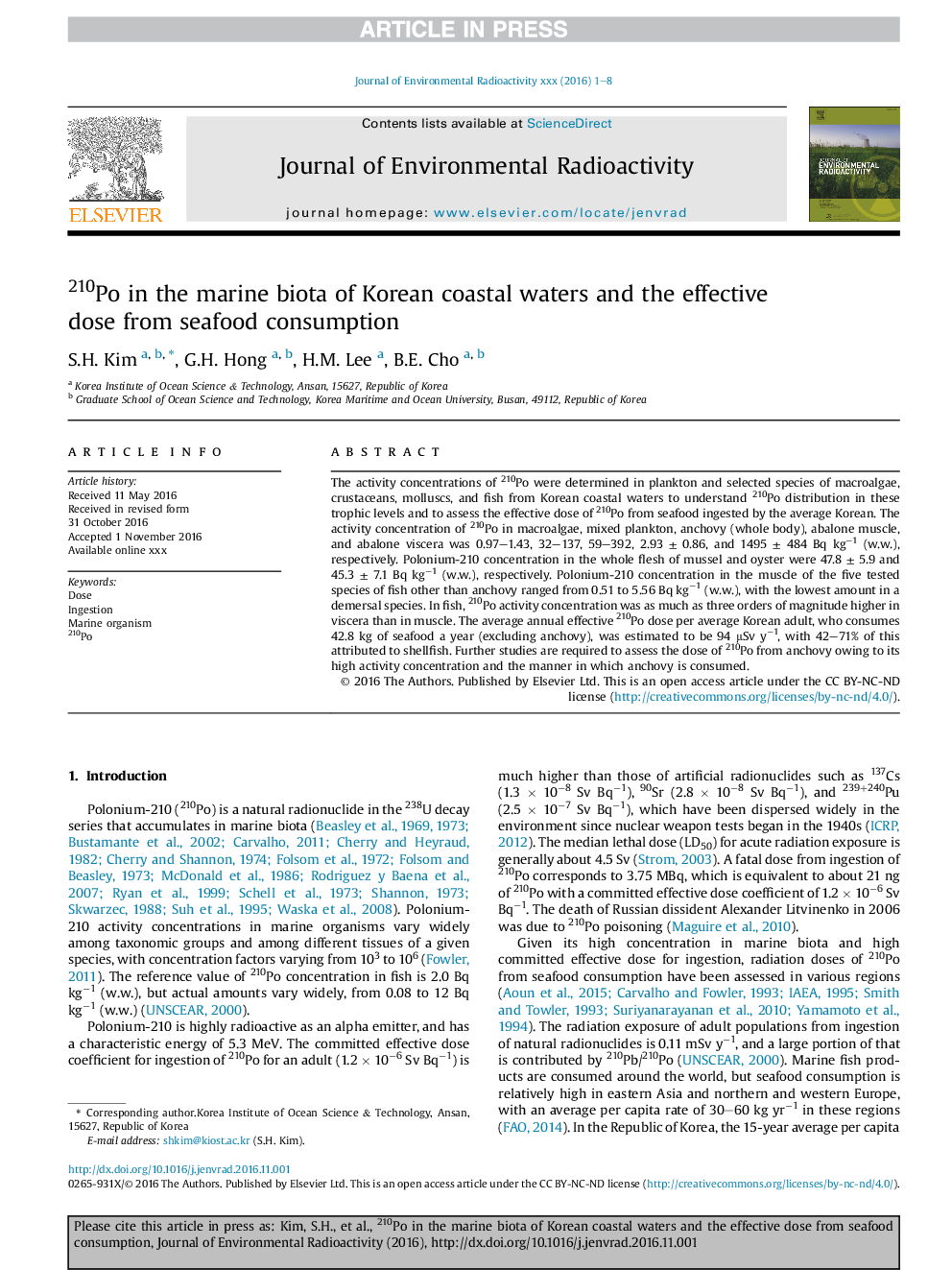| Article ID | Journal | Published Year | Pages | File Type |
|---|---|---|---|---|
| 5477512 | Journal of Environmental Radioactivity | 2017 | 8 Pages |
Abstract
The activity concentrations of 210Po were determined in plankton and selected species of macroalgae, crustaceans, molluscs, and fish from Korean coastal waters to understand 210Po distribution in these trophic levels and to assess the effective dose of 210Po from seafood ingested by the average Korean. The activity concentration of 210Po in macroalgae, mixed plankton, anchovy (whole body), abalone muscle, and abalone viscera was 0.97-1.43, 32-137, 59-392, 2.93 ± 0.86, and 1495 ± 484 Bq kgâ1 (w.w.), respectively. Polonium-210 concentration in the whole flesh of mussel and oyster were 47.8 ± 5.9 and 45.3 ± 7.1 Bq kgâ1 (w.w.), respectively. Polonium-210 concentration in the muscle of the five tested species of fish other than anchovy ranged from 0.51 to 5.56 Bq kgâ1 (w.w.), with the lowest amount in a demersal species. In fish, 210Po activity concentration was as much as three orders of magnitude higher in viscera than in muscle. The average annual effective 210Po dose per average Korean adult, who consumes 42.8 kg of seafood a year (excluding anchovy), was estimated to be 94 μSv yâ1, with 42-71% of this attributed to shellfish. Further studies are required to assess the dose of 210Po from anchovy owing to its high activity concentration and the manner in which anchovy is consumed.
Keywords
Related Topics
Physical Sciences and Engineering
Energy
Nuclear Energy and Engineering
Authors
S.H. Kim, G.H. Hong, H.M. Lee, B.E. Cho,
